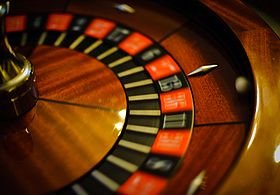
As human beings, we’re naturally wired to look for patterns in the world around us. Unfortunately, this also leads to a tendency to see patterns where they don’t actually exist. This tendency is at the heart of the Gambler’s Fallacy, also known as the Monte Carlo Fallacy.
The name “Monte Carlo Fallacy” comes from an incident in Monte Carlo in the summer of 1913, when a roulette wheel came up black fifteen times in a row. Gamblers decided that red <i>had</i> to come up soon, and bets on red rained down on the table. As black came up again and again, the players increased their stakes, becoming fanatically convinced that red was due. In the end, the wheel hit black twenty-six times, and the players who bet on red had been cleaned out of millions of francs.
The Gambler’s Fallacy, simply stated, means forgetting that a roulette wheel, like other gambling devices, is random. The wheel has no memory, and the results of one spin have no effect on the results of future spins. As long as the wheel is fair, past results cannot be used to predict future outcomes. Even if the ball stops at 23 five times in a row, the odds of it stopping at 23 will be exactly the same for every future spin.
The Gambler’s Fallacy shows up when players look for “streaks” or “hot” numbers. Conversely, as in the Monte Carlo example, it can also lead players to assume that a certain bet is “due” because it hasn’t won in a while.
In the heat of a gambling session, when you’re looking for any advantage you can get to cut the house’s edge, it can easy to forget you’re playing an essentially random game. Don’t fall into the trap of looking for patterns where there are none, or trying to predict the future based on random information.









